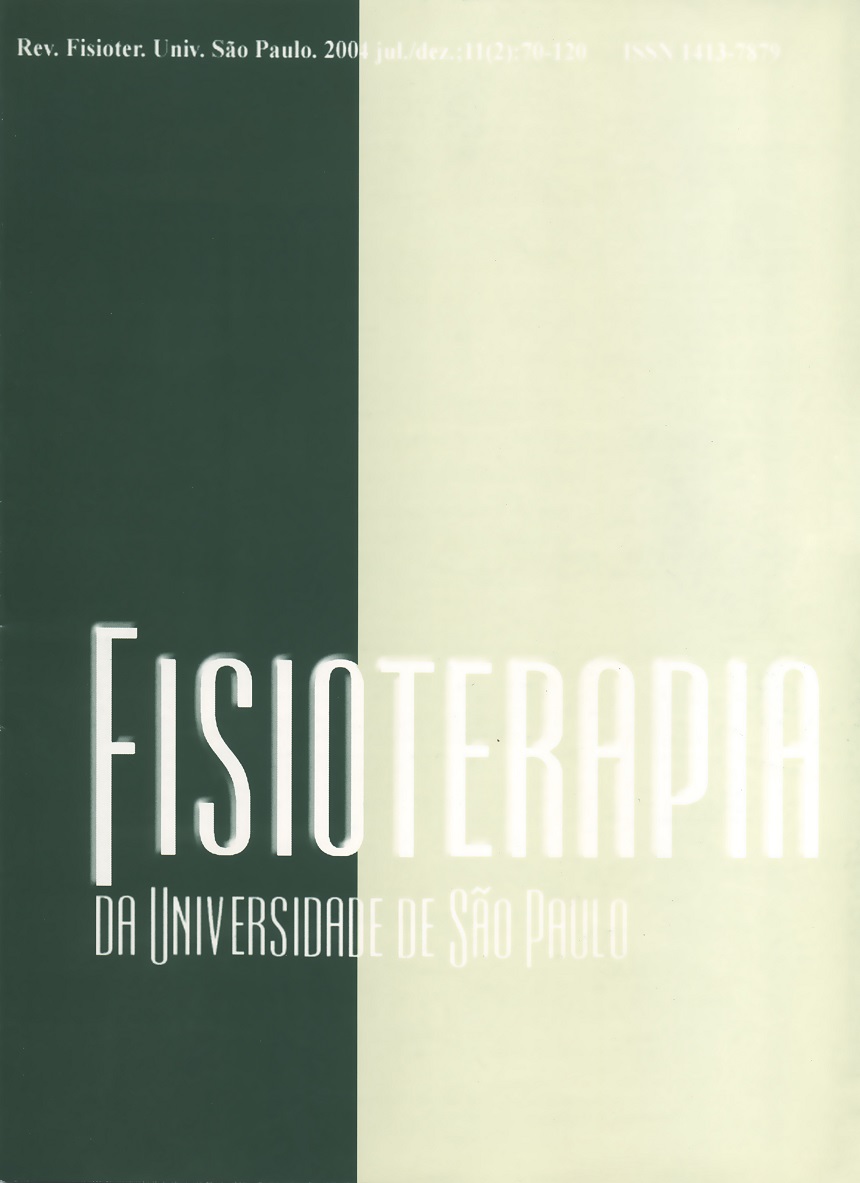Influence of the therapeutic ultrasound on the rabbits's bone growth plate
DOI:
https://doi.org/10.1590/fpusp.v10i1.77770Keywords:
bone development, ultrasonic therapy/methods, dissertations academic.Abstract
The application of therapeutic ultrasound on children's growth plate still generates doubt in relation to its injurious effects. Then, a lot of children are not treat with this resource when they present some illness on these areas. These doubts are not just limited to the use of the ultrasound, but also to the intensity to be used without provoking any damage. Based on these doubts, it was purpose of this study to evaluate the influence of the application of ultrasonic energy used in therapeutic doses in its continuous and pulsed forms on the growth plate of proximal part of the rabbits' tibias in growth and to identify the doses that eventually could have macroscopic and microscopic alterations harming the normal bony growth. 32 white new Zealand rabbits 08 weeks years old were used in the beginning of the experiment. They were divided in three groups. In the first group of 10 rabbits ultrasound was applied with frequency of I mhz effective radiation area (era) of 3 cm2 ± 10% pulsed output in 100 hz ± 10% with pulse length of 2,0 ms and intensity of 2 w/cm2 (is. a.t.p.) in the medial face of the right tibia in its superior extremity for 5 minutes. In the second group of 11 rabbits continuous ultrasound was applied with the same technique and in the same area with effective radiation area (era) of 3 cm2 ± 10% and intensity of 1 w/cm2 (is.a.t.a.), also for 5 minutes and in the third group, also with II rabbits, continuous ultrasound was applied with the same technique and in the same area with effective radiation area(era) of 5 cm2 ± 10% and intensity of 2 w/cm2 (i.s.a.t.a.) for 3 minutes. The left tibias were kept as control. All the animals were treated in the same hour for ten serial days. X-rays of the right and left tibias and femurs (lateral view and anteroposterior) was previously made two days before the ultrasound application and also after they were killed, at the age of 16 weeks for a qualitative evaluation. The lenght and width of the plateau in its front plan of the tibias were measured with a vernier caliper. The histomorphometric analysis of the growth plate was made by amplifying of 2,5x with the aid of a digital system of analysis, using the ks 300 kontros eletronics software where was appraised serial microscopic fields in the lateral and medial areas of the growth plate completing a total of four measures, two for each area, always beginning in the ends on the lateral and medial side. It was measured the maximum and minimum length, area and perimeter expresses in micrometers. There were no statistically significant difference among values obtained through histomorphometric analysis, with vernier caliper or x-rays alterations in the first group. This did not happen with the second and third groups, in which the measures histomorphometric and obtained with vernier caliper were shown altered on the right side in relation to the left and x-rays alterations was also observed. The histologics statistically significant difference for the group II happened in the sum average of the lateral maximum length. In the measures with vernier caliper showed statistically significant difference in the width and bordering significancy in the length. In the group HI the histologics differences showed bordering significancy in the sum average of the minimum length on the side medial, in the sum average of the area on the lateral side and in the minimum length of the sum average of the four measures. In the measures with vernier caliper showed statistically significant difference in the width and bordering significância in the length. It was concluded that the rabbit group that received pulsed
ultrasound with 2 w/cm2 (is.a.t.p.) did not show alterations but these happened with the second and third groups that received continuous ultrasound with lw/cm2 and 2w/cm2 (is.a.t.a.), being dependent on the
intensity used, that is, as larger the used intensity, larger the injurious effects.
Downloads
Download data is not yet available.
Downloads
Published
2003-06-30
Issue
Section
Thesis / Dissertations
How to Cite
Influence of the therapeutic ultrasound on the rabbits’s bone growth plate. (2003). Fisioterapia E Pesquisa, 10(1), 50-51. https://doi.org/10.1590/fpusp.v10i1.77770



